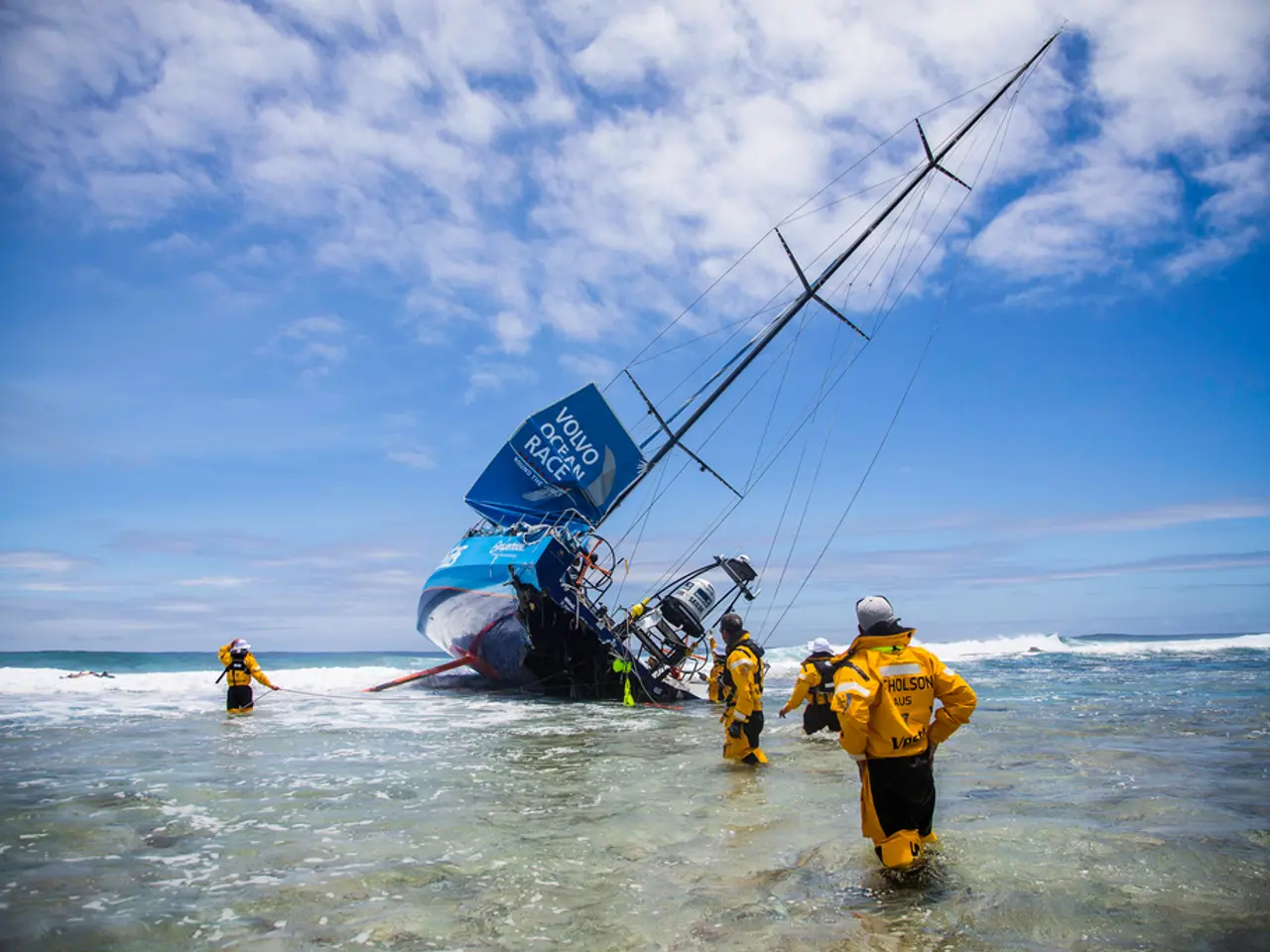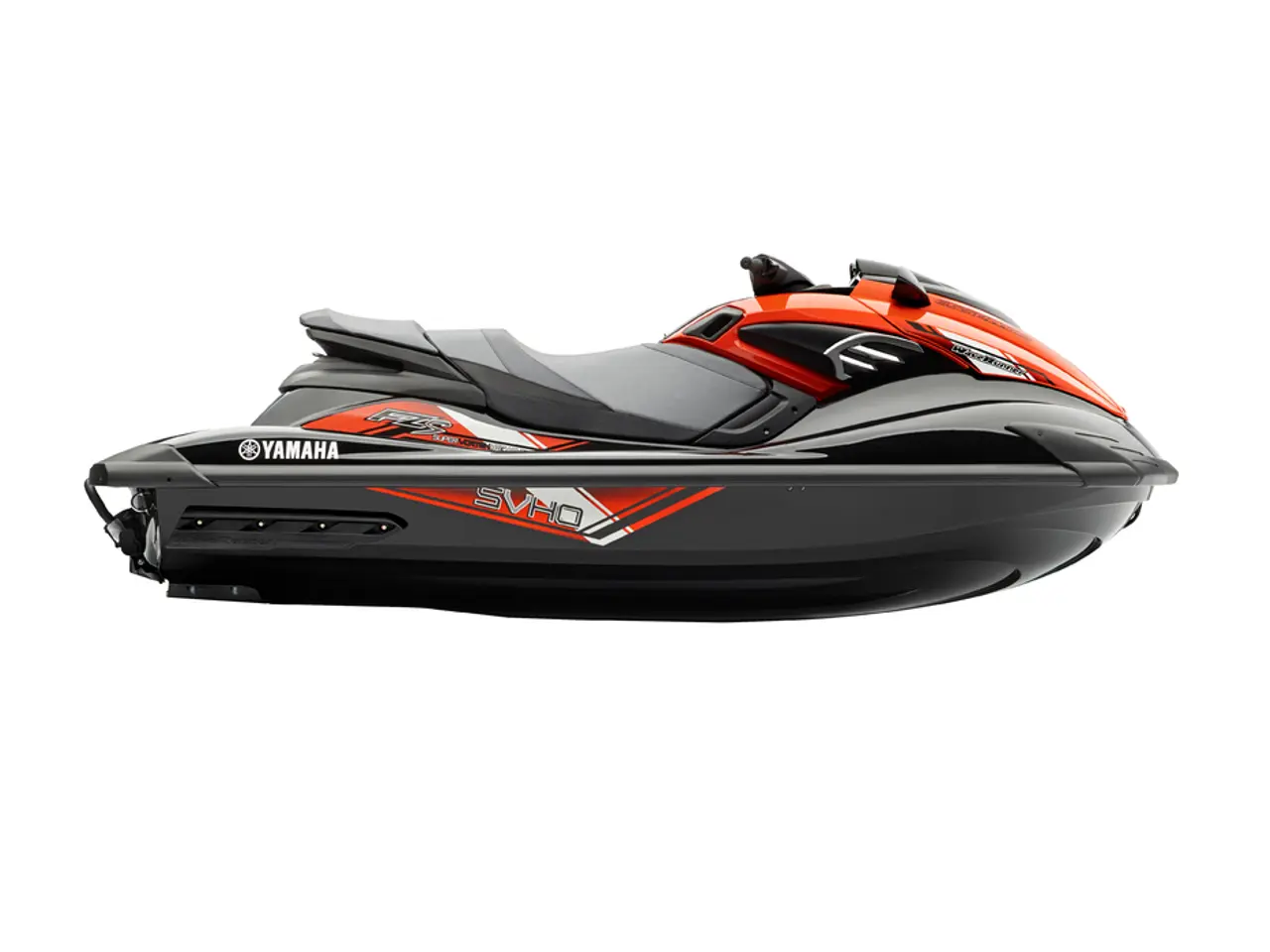Unveiling Causes Behind the Tragedy of Titan
U.S. Coast Guard Report Reveals Causes of Titan Submersible Disaster
In June 2023, a tragic event unfolded when the deep-sea submersible "Titan" went missing during an expedition to explore the Titanic wreck. The submersible, operated by OceanGate, was later discovered about 500 meters from the Titanic site, and it was confirmed that all five people onboard had perished[1][2].
Over two years later, the U.S. Coast Guard has released a comprehensive 335-page report detailing the causes of the Titan tragedy[1]. The report, titled "Report of Investigation into the Loss of the Titan Submersible," lists eight primary causal factors, with severe criticism of the operator, OceanGate[1].
The report reveals that the loss of structural integrity of the carbon fiber hull led to the catastrophic implosion[2]. This was due to critical safety flaws in OceanGate’s operational culture, described as toxic, where safety concerns were ignored, concealed, or falsified to maintain reputation and evade regulatory oversight[1][2][4]. CEO Stockton Rush reclassified passengers as “mission specialists” to bypass safety regulations[2][3].
The report also highlights the lack of meaningful analysis or testing of the carbon fiber hull material and overreliance on real-time monitoring systems to assess hull integrity[2]. Continuing use of the submersible despite incidents compromising its integrity was also a significant factor[2].
The U.S. Coast Guard’s report does not mention any potential criminal investigation against Stockton Rush for his role in the accident[1]. However, it suggests that such an investigation might have been launched had he survived, for acting recklessly and contributing to the deaths of four people[1].
In addition, the report emphasizes the need for a more robust regulatory framework for innovative submersibles and vessels of novel design, as the current one left gaps that operators exploited[1][2]. Ineffective whistleblower protections under the Seaman’s Protection Act also failed to report or resolve safety issues[1].
The Coast Guard issued 17 safety recommendations aimed at improving oversight of submersible operations, enhancing inter-agency coordination, and closing regulatory gaps[1][4]. The report is now under review by the Commandant of the Coast Guard, who will finalize the position on the recommendations. The National Transportation Safety Board is also investigating independently, with its final report pending[2].
The Titan disaster was a grim reminder of the importance of adhering to accepted safety standards, proper engineering and testing of critical components, and effective regulatory oversight. The Dawood family, who lost two family members in the tragedy, issued a statement expressing their grief and calling for reforms, strict safety standards, and effective oversight in the submersible industry[5].
References: 1. U.S. Coast Guard Report on Titan Submersible Disaster 2. The Guardian: U.S. Coast Guard Report Blames OceanGate for Titan Submersible Disaster 3. CNN: OceanGate CEO Reclassified Passengers as "Mission Specialists" Before Titan Disaster 4. Associated Press: Coast Guard Report Calls for Stronger Regulatory Oversight in Submersible Industry 5. Dawood Family Statement on Titan Submersible Disaster
- The U.S. Coast Guard's comprehensive report on the Titan submersible disaster highlights the need for a stronger environmental-science and technology-driven strategy in the design and construction of innovative submersibles, in light of the critical safety flaws found in the carbon fiber hull of the Titan.
- The criminal-justice system should consider the potential consequences of ignoring environmental-science, technology, and general-news reports about the state of a company's operational culture, as the toxic culture at OceanGate contributed to the severe safety flaws in their submersible, resulting in the tragic loss of life.
- In an effort to prevent future disasters such as the Titan submersible tragedy, updated community policies and employment policies should prioritize the safety and well-being of employees and passengers by implementing robust regulatory frameworks, effective whistleblower protections, and rigorous testing and analysis of critical components in submersible and space-and-astronomy vessels.




